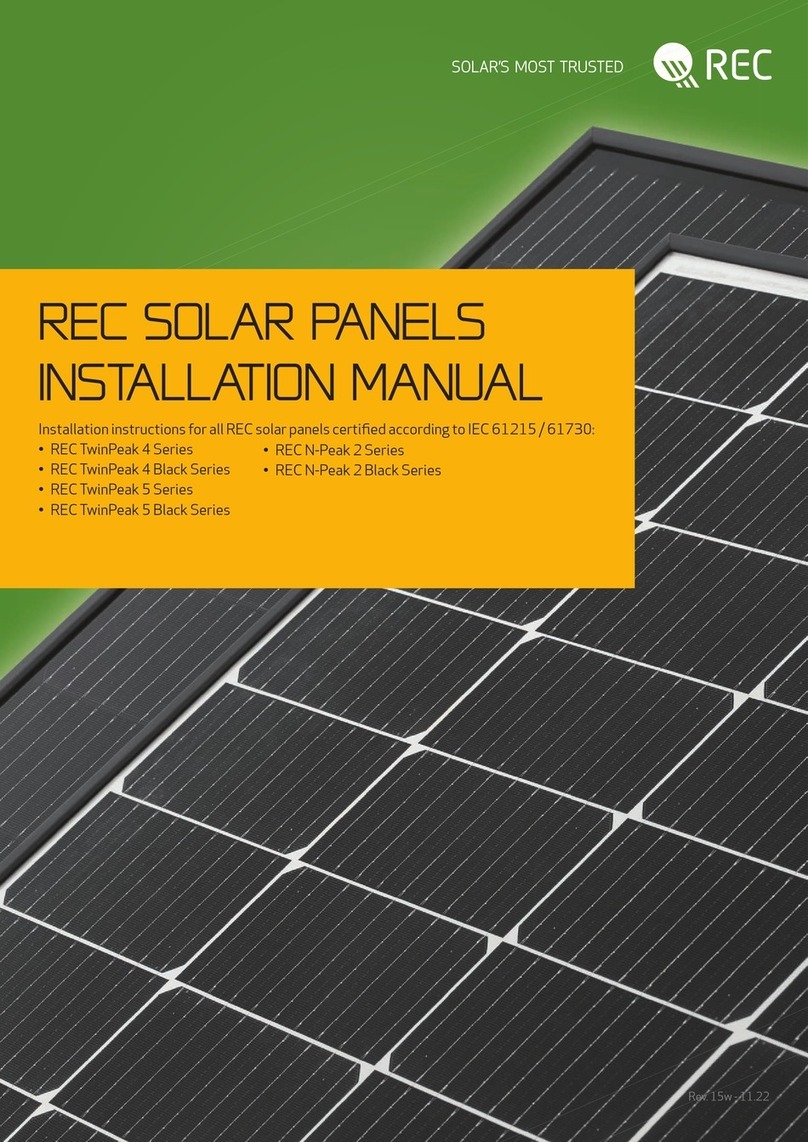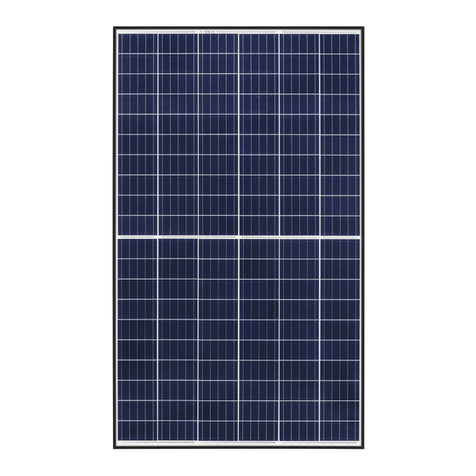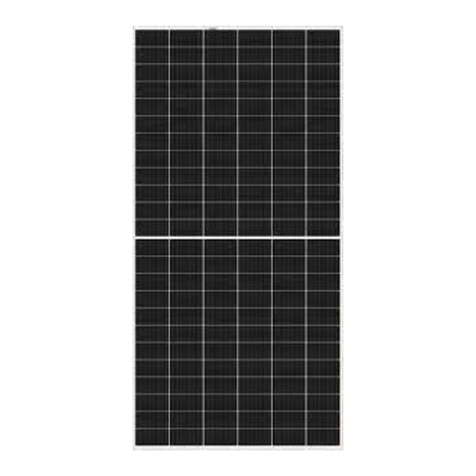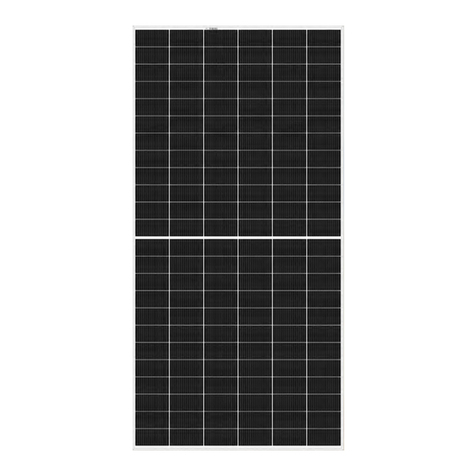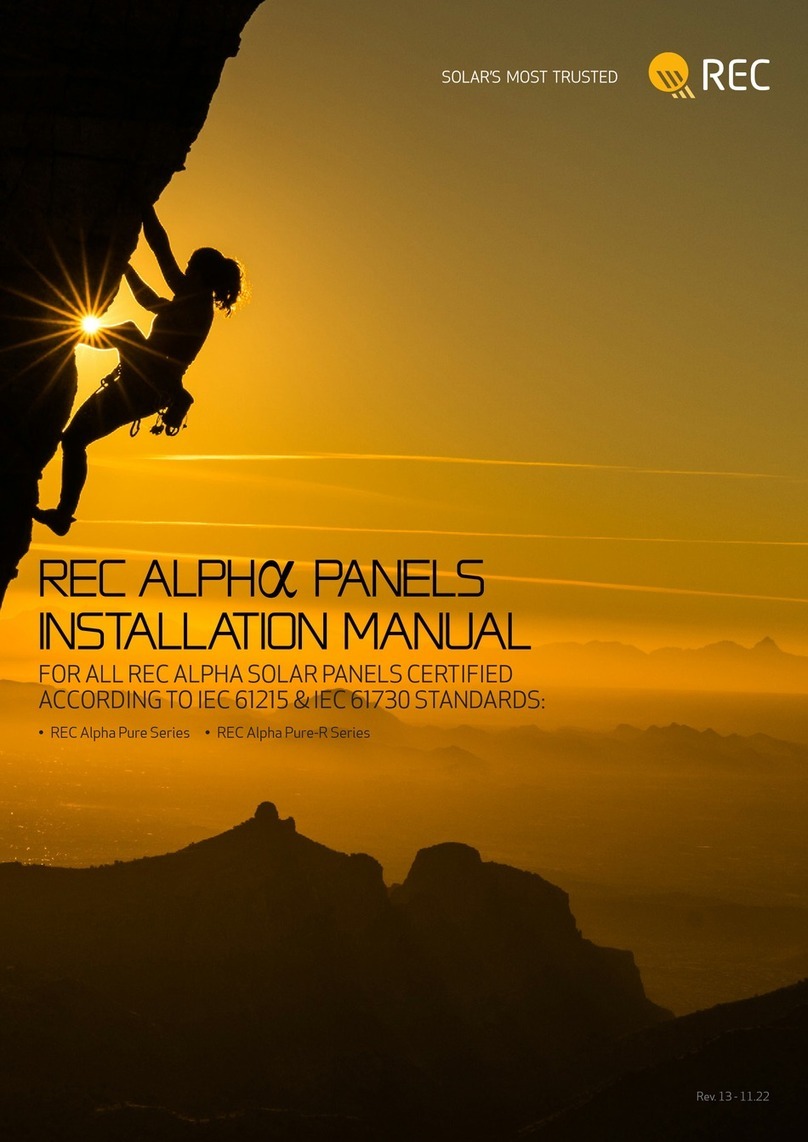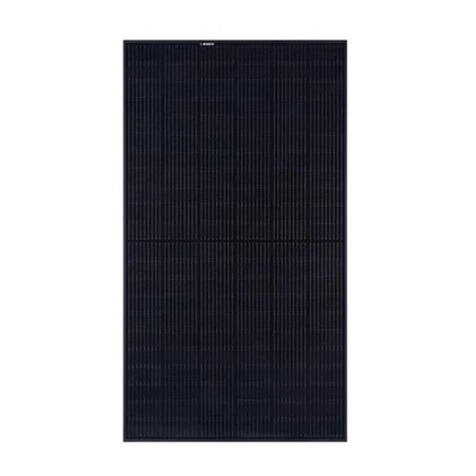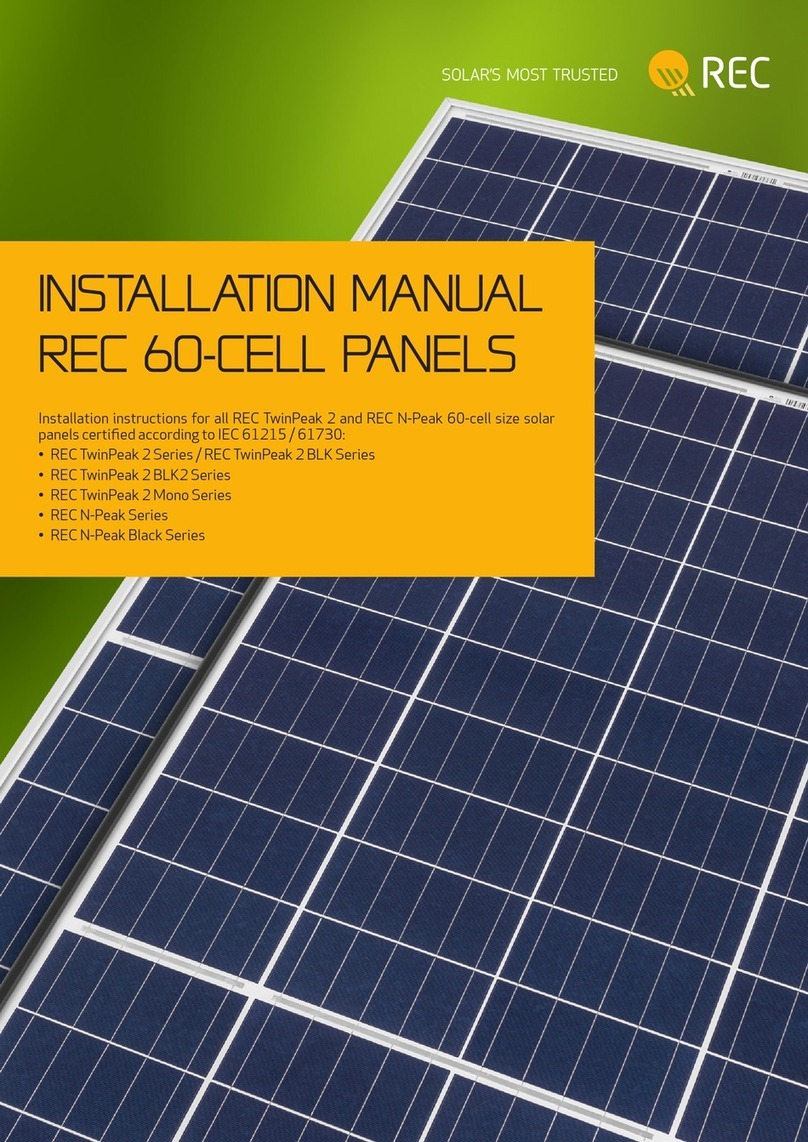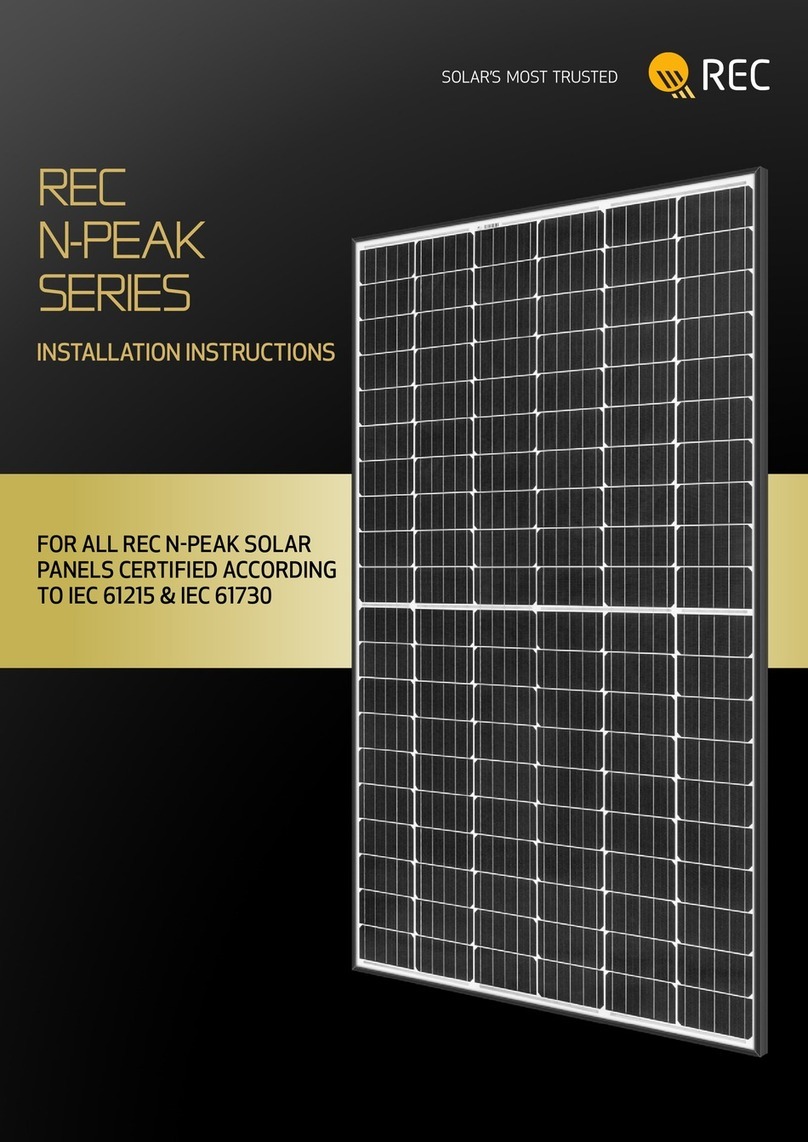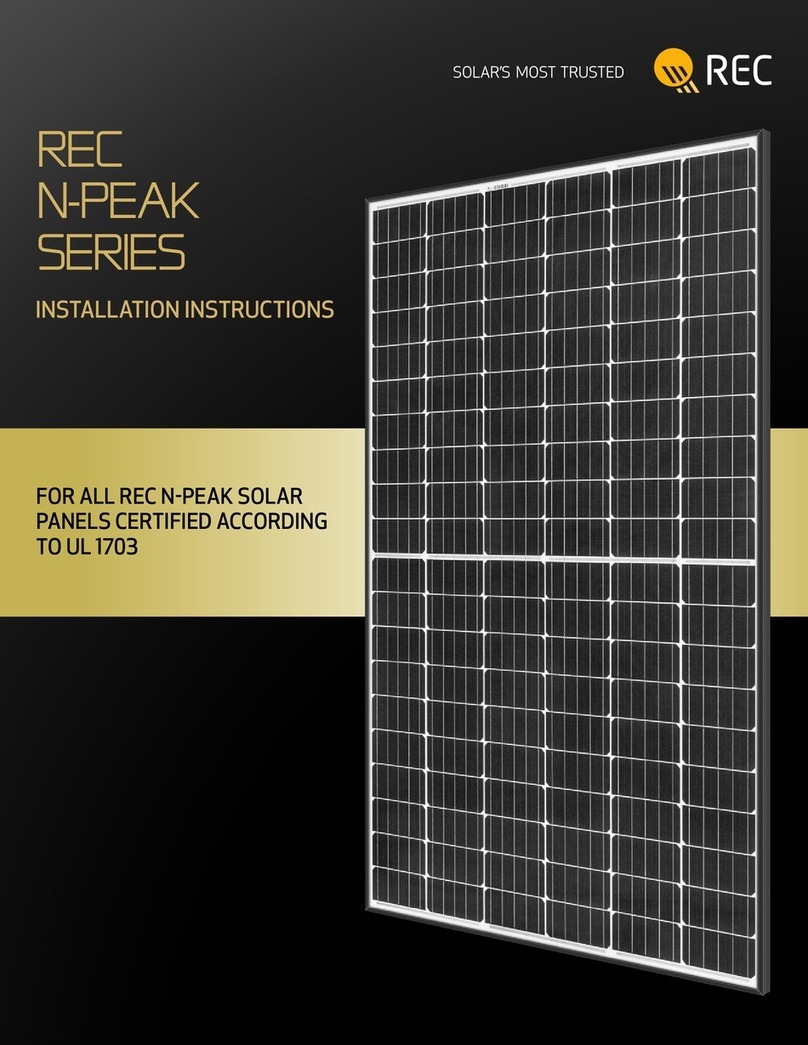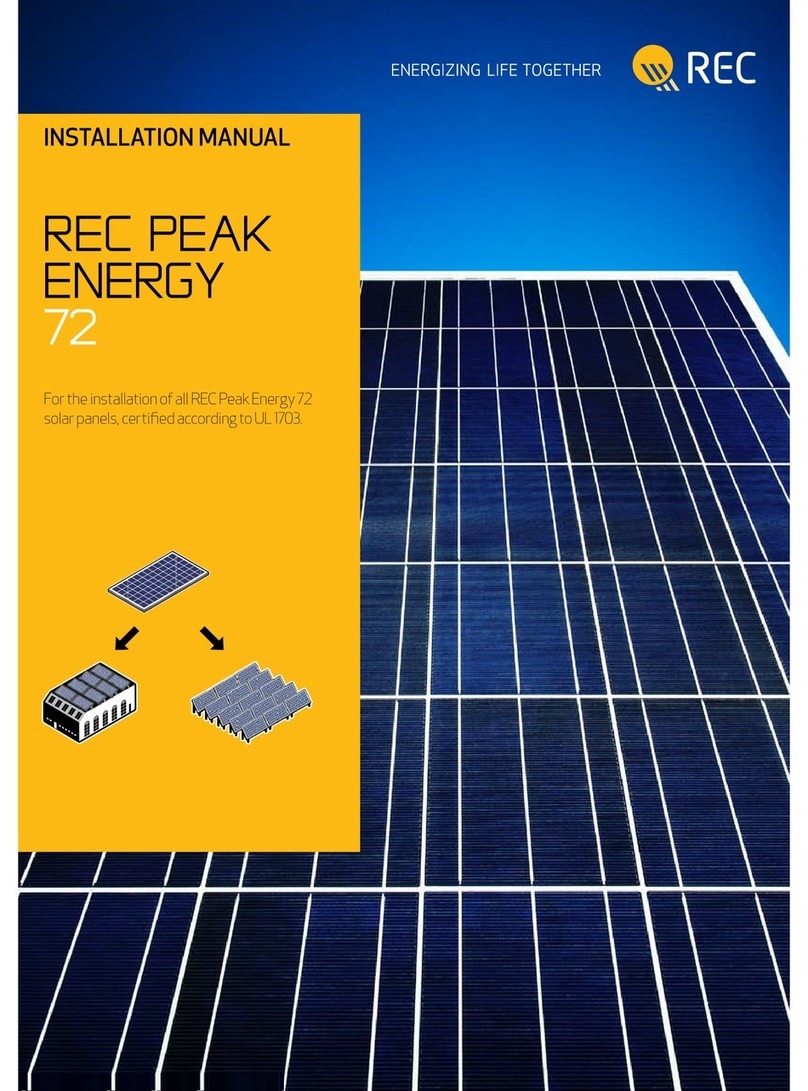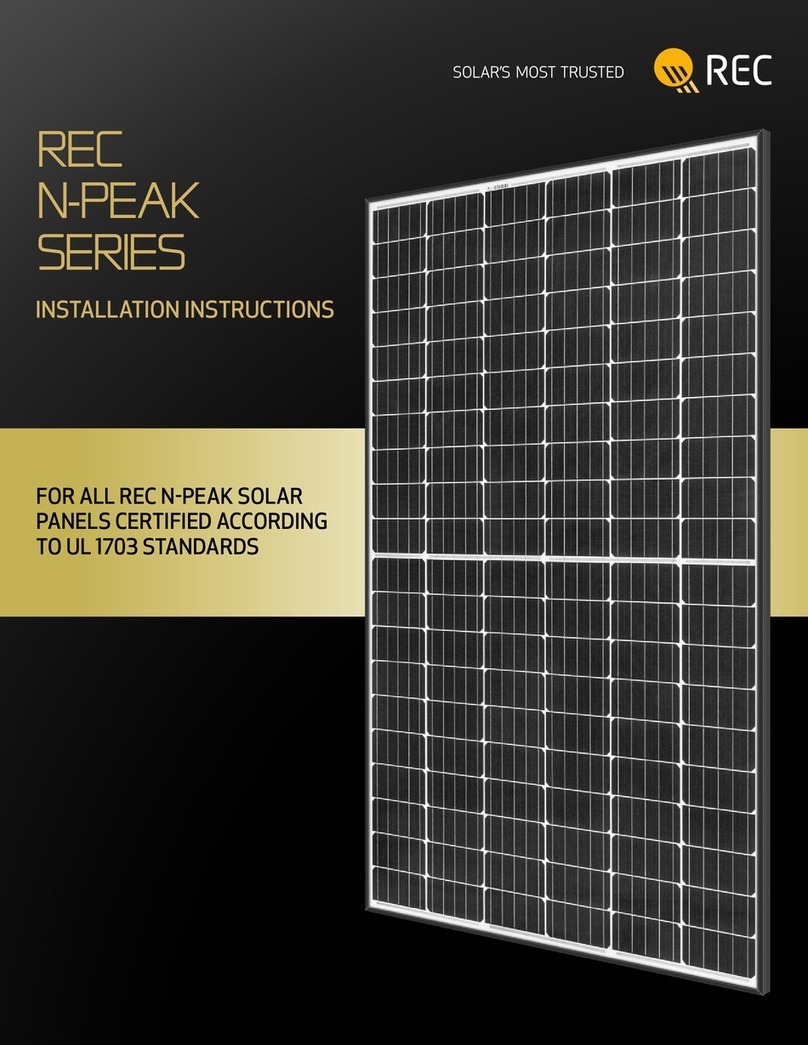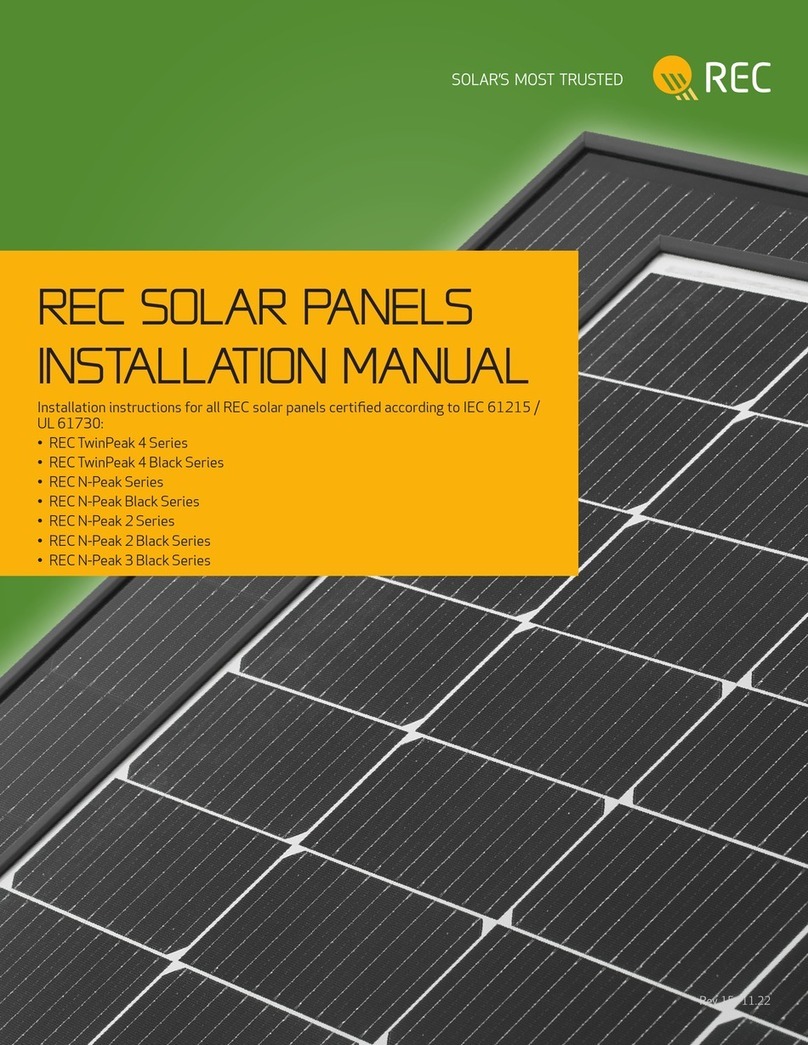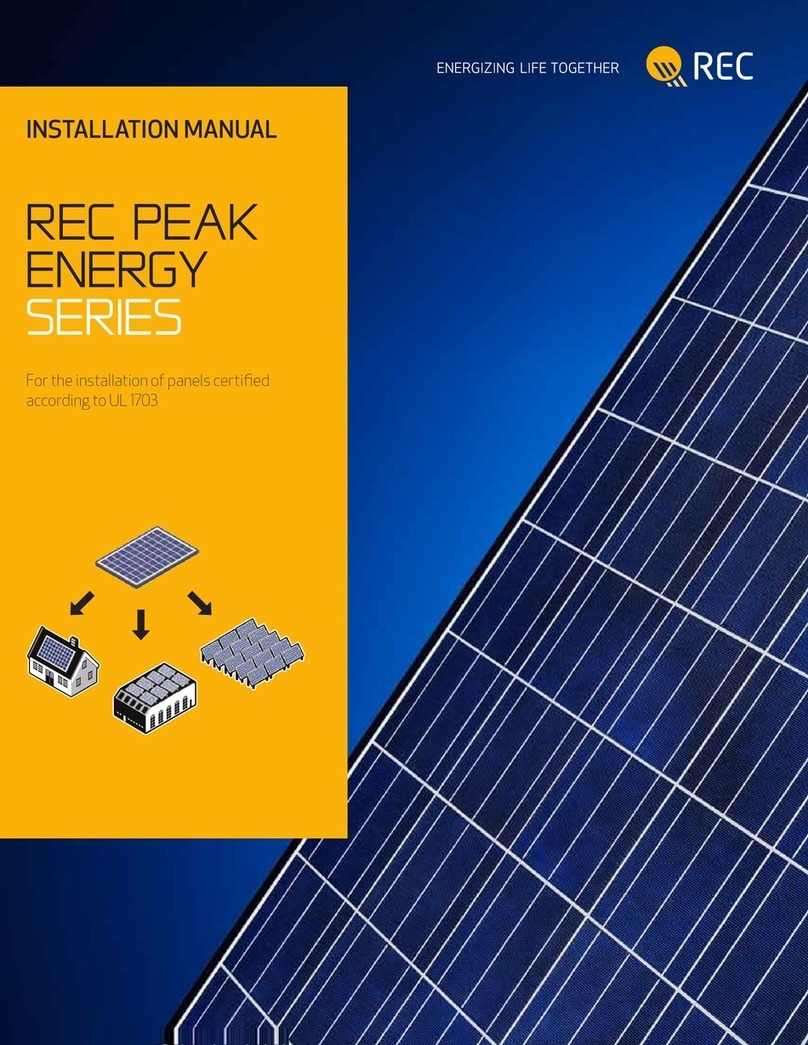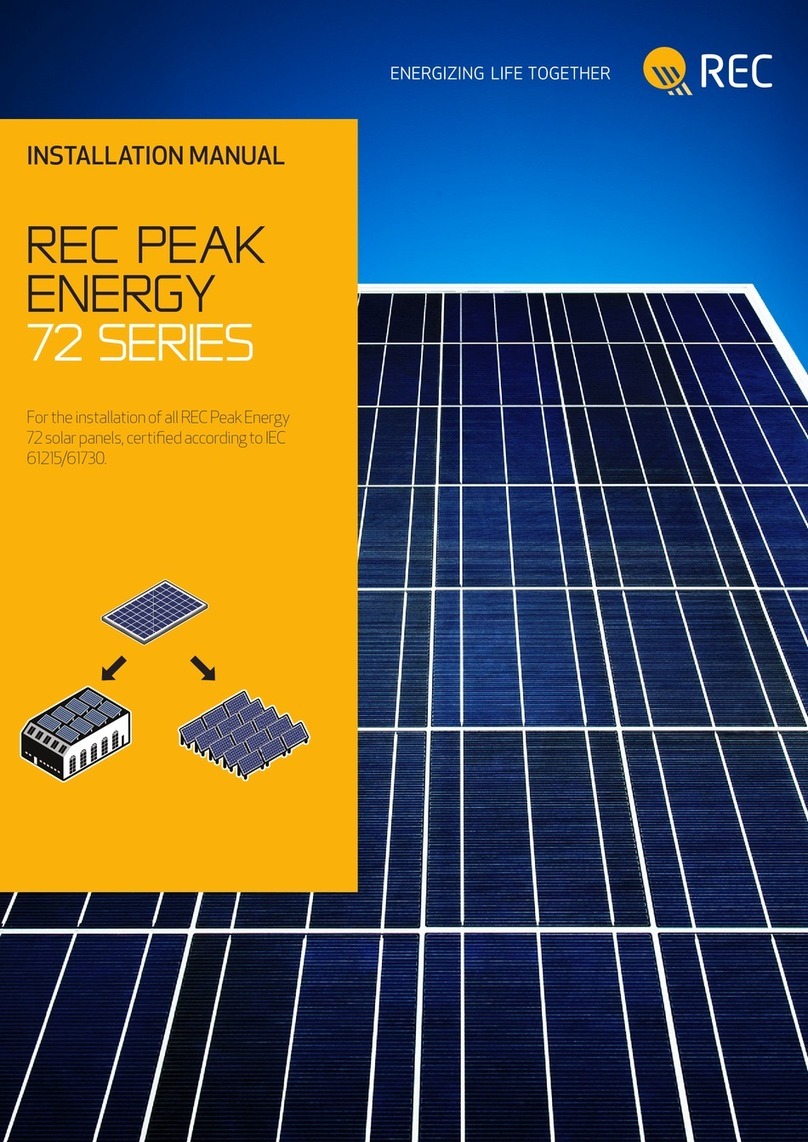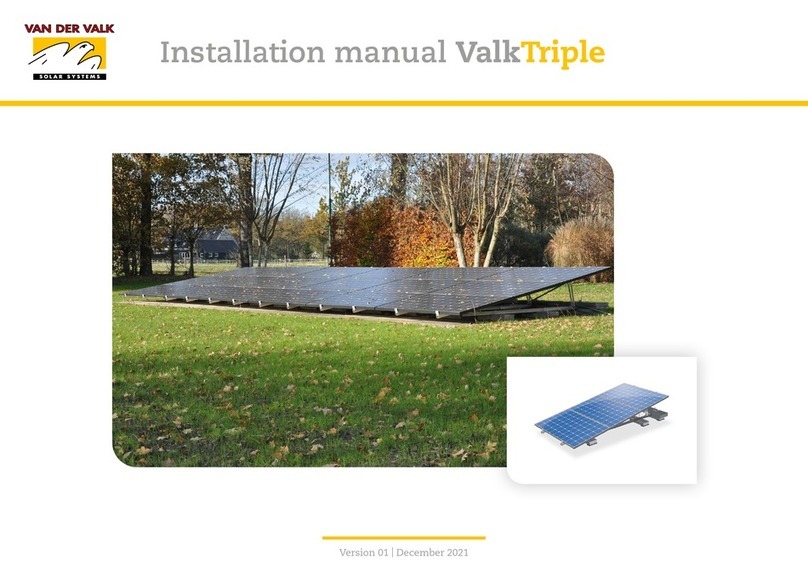REC Peak Energy Series Installation Manual - IEC /
RevL . Ref: NEL
ELECTRICAL INSTALLATION
ELECTRICAL REQUIREMENTS
i) Application Class
REC panels are rated for use in electrical application class A: Hazardous voltage (IEC : higher than V DC; EN : higher than
V), hazardous power applications (higher than W) where general contact access is anticipated (panels qualified for safety through
EN IEC - and - within this application class are considered to meet the requirements for Safety Class II).
ii) System Requirements
REC panels are only for use where they meet the specific technical requirements of the complete system. Ensure other components will not
cause mechanical or electrical damage to the panels. Only panels of the same type and power class should be connected.
iii) String configuration
When using string configuration, plan and execute it according to inverter manufacturer’s instructions. The number of panels connected
to an inverter must be within the inverter voltage limits and operating range. Do not exceed the total system voltage permied by the
manufacturer, nor under any circumstance exceed the maximum system voltage of V. The maximum system fuse rating is A, the
maximum reverse current is A.
iv) String connection
Panels connected in series must have the same amp rating. The maximum number of panels that can be connected in series depends upon
system design, type of inverter and environmental conditions. There are no restrictions on the number of panels that may be connected in
parallel. Panel configuration must correspond to the specifications of other system components e.g. inverter. Refer to the reverse current
rating of the panel (indicated in theTechnical Characteristics on p. or on the panel datasheet).
v) Wiring layout
To minimize voltage surges (e.g. indirect lightning strikes), cables of the same string must be bundled together so loops are as small as
possible. String configurations must be checked before commissioning. If open circuit voltage (Voc) and short circuit current (Isc) deviate
from specification, this may indicate a configuration fault. Correct DC polarity is to be observed at all times.
vi) Junction box, cables, connectors
The junction box on REC Peak Energy panels is rated IP. All connectors and cables must be secure and tight as well as electrically and
mechanically sound. UV-resistant cables and connectors approved for outdoor use must be used. Conductor gauge must be chosen to
ensure DC power losses (voltage drop) are kept to a minimum (<).
Observe all local regulations when selecting cables. For string connections, use minimum mmor copper wires insulated for a maximum
operating temperature of °C. Secure cables using UV-resistant cable ties or other device. Loose and unsecured cables must be protected
from damage (e.g., mechanical, abrasion, sharp objects, animals). Avoid exposing cables to direct sunlight and permanent tension.
REC prohibits any modification to the panel, including the cuing of cables in order to change the connector type or the opening
of the junction box unless explicitly authorized by REC. Doing so will invalidate the warranty.
vii) Electrical Ratings
Electrical ratings are within of measured values at StandardTest Conditions (STC). Allow for increased output of a panel as a result of
conditions different to STC by multiplying the values of ISC and VOC by . (or according to local regulations for electrical system installation).
SAFETY MEASURES
All relevant codes and regulations should be referred to and observed as well as regulations on working at heights and fall protection.
i) Safety in the working area
Installation of REC Peak Energy panels may involve rooop work. Ensure all local regulations regarding working at heights are followed.
Before beginning work on a photovoltaic system, ensure all working surfaces are structurally sound and capable of bearing the weight of
employees and required equipment. Remember to isolate the system from the grid before carrying out any maintenance or repair work.
ii) Preventing current generation
To prevent the panels automatically generating current (electricity) when exposed to light, shield the system with a non-transparent cover
during installation, maintenance or repair work.
iii) Specific hazards of DC electricity
Solar panels generate direct current (DC). Once current is flowing, breaking or opening a connection (e.g. disconnecting two panels) can
cause an electrical arc. Unlike low voltage AC wiring, DC arcs are not self-extinguishing. They are potentially lethal burn and fire hazards:
• Follow panel and inverter manufacturers’ installation, handling and operating instructions.
• Remove/open the inverter AC fuse/circuit breaker before disconnecting from the public grid.
• Switch off or disconnect the inverter and wait for the time specified by the manufacturer before commencing work. High-voltage
components need sufficient time to discharge.
iv) Safety requirements
The voltage produced by a single panel and panels connected in series (voltages added together) or in parallel (currents added together) can
be dangerous. Although the fully insulated plug contacts on the panel’s output cables provide touch-safe protection, the following points
must be observed during handling to avoid the risk of sparking, fire hazards, burns and lethal electric shocks.
• Excercise extreme caution when wiring panels and look out for damaged or dirty cables etc.
• Never insert metallic or other conductive objects into plugs or sockets.
• Ensure that all electrical connections are completely dry before assembly.
• Keep all materials, tools and working conditions dry and tidy.
• Use appropriate safety equipment e.g. nonslip footwear, insulated gloves and insulated tools.
• Solar panels produce current when exposed to sunlight. Do not connect the system to the inverter during solar exposure.
